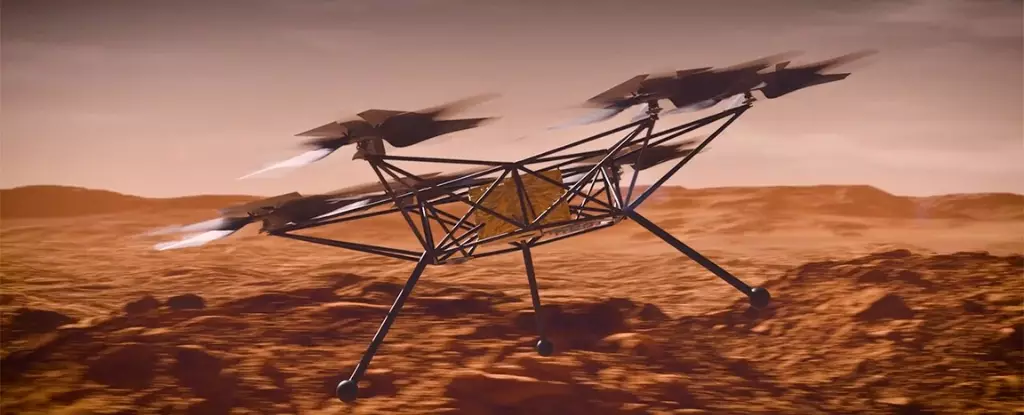The monumental achievement of powered flight on another planet was realized in 2021 when NASA’s Ingenuity helicopter successfully ascended into the thin Martian atmosphere. This pioneering feat not only showcased the potential for aerial vehicles in extraterrestrial environments but also set the stage for more advanced crafts that can explore distant worlds. The latest innovation from NASA, the Mars Chopper, is poised to enhance our ability to navigate and understand not just Mars but potentially other celestial bodies with atmospheres that support flight.
The Ingenuity Breakthrough
Ingenuity was a small drone-like helicopter launched alongside the Perseverance rover in 2020, tasked primarily with proving that controlled flight was feasible on Mars. The thin Martian atmosphere presented significant challenges since it has less than 1% of the density of Earth’s atmosphere. This necessitated Ingenuity to exert considerably more effort to achieve lift, yet it successfully completed its first flight on April 19, 2021. Hovering at a mere 10 feet, it set a historical precedent for human ingenuity in aerospace engineering.
After its initial flight, Ingenuity went on to complete a staggering 60 missions, providing insightful aerial surveys and reconnaissance of the Martian surface. However, the operational challenges were multifaceted. Not only did the helicopter need to generate lift in a less dense atmosphere, but it also had to contend with the ubiquitous dust on Mars that posed a risk to its delicate components. This revealed a crucial lesson: any future aerial vehicles must be engineered with both flight capabilities and protective mechanisms against environmental hazards.
Building upon the successes and lessons learned from Ingenuity, NASA has unveiled designs for the next-generation aerial vehicle: the Mars Chopper. This advanced drone aims to transport scientific instruments that far exceed the capabilities of its predecessor. Unlike Ingenuity, which primarily served as a technology demonstrator, the Mars Chopper is set to play a practical role in supporting future missions, capable of conducting terrain mapping and geological analysis from the air.
The Mars Chopper’s design features six rotors, each with six blades. Although smaller compared to those used by Ingenuity, this configuration is strategically optimized to enhance lift and stability under Martian conditions. With a payload capacity of 5 kilograms and a range of up to 3 kilometers, the Chopper is geared to undertake a variety of tasks essential for Mars exploration. This includes scouting locations for future landings, supporting human expeditions, and collecting vital data that could inform deeper understanding of Mars’ geology and atmosphere.
The Chopper’s development is a collaborative effort between the Jet Propulsion Laboratory and NASA’s Ames Research Center, and highlights a significant leap in aerial exploration capabilities. Its size is comparable to that of a standard SUV, hinting at the robust engineering that goes into creating a vehicle fit for the unknown challenges of extraterrestrial navigation. This increased scale and capability will not only enhance our understanding of Mars but also extend to other planetary objects, heralding a new era of exploration for the human race.
The Mars Chopper stands to be a game changer, particularly when sympathetic to the needs of future human missions. As rovers encounter obstacles and challenging terrain, aerial reconnaissance becomes invaluable. Drones like the Mars Chopper can cover expansive areas quickly and efficiently, gathering data that ground-based vehicles cannot reach. The combination of aerial insights from the Chopper and the meticulous work of rovers will significantly improve our exploration strategies.
Final Thoughts
The advancements seen from Ingenuity to Mars Chopper demonstrate the continual evolution of technology that drives our quest to explore the cosmos. As each innovation unveils new opportunities and insights, humanity stands on the brink of understanding other worlds like never before. With the potential not only for scientific discovery but also for paving the way toward human exploration, the Mars Chopper embodies hope and excitement for a future filled with possibilities on our neighboring planet and beyond. By embracing ingenuity and collaboration, we are charting a course for humanity’s next great adventure among the stars.

Leave a Reply